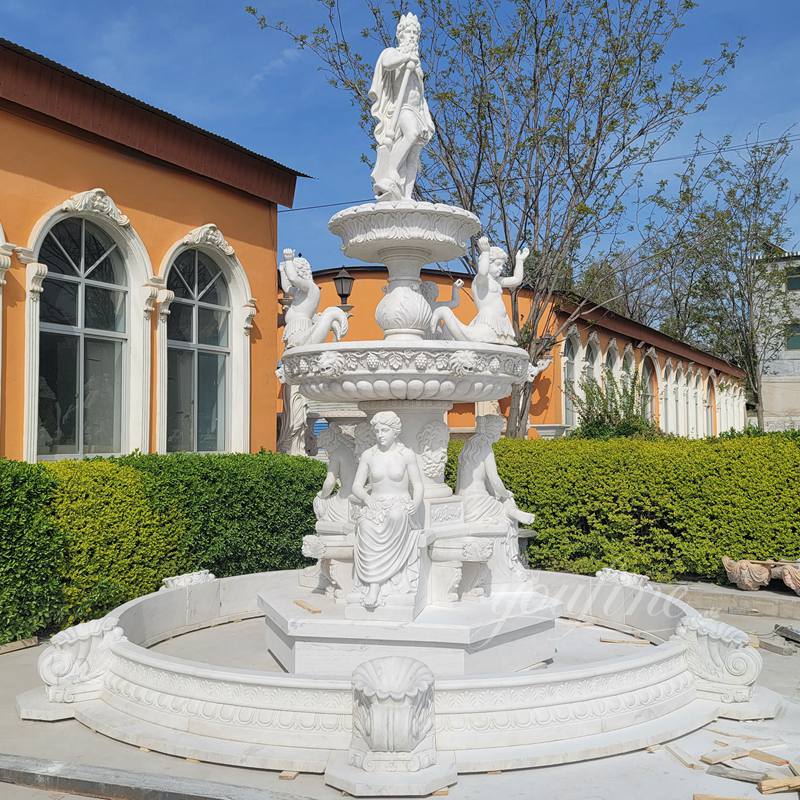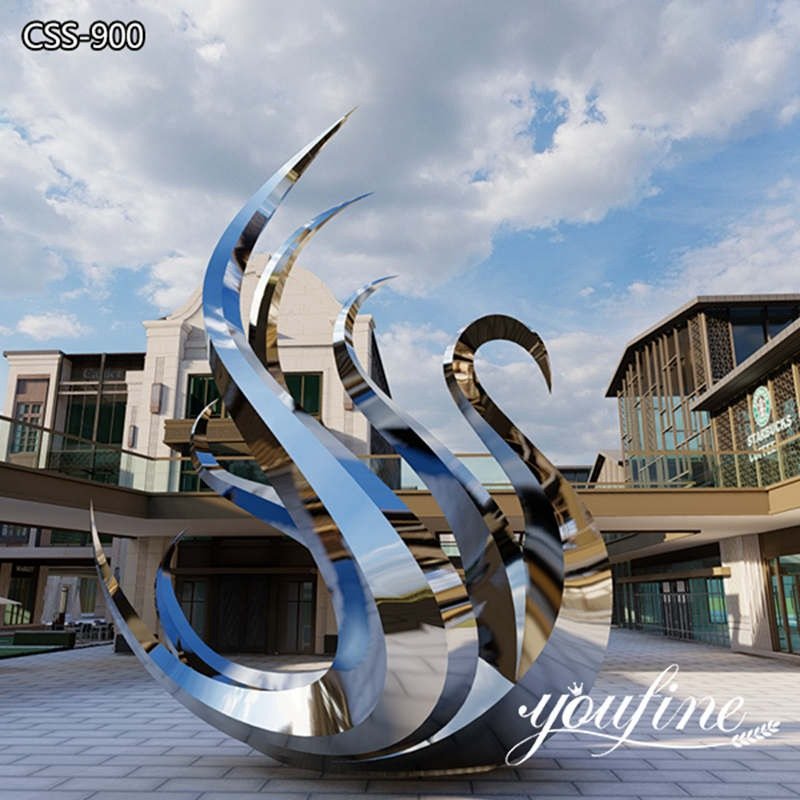In Catholic culture and art, sculptures of the Virgin Mary embody the beauty of faith and art. Different statues of Mother Mary convey different forms and meanings. This article introduces 10 famous marble Virgin Mary statues from four perspectives: background, characteristics, symbolism, and common locations.
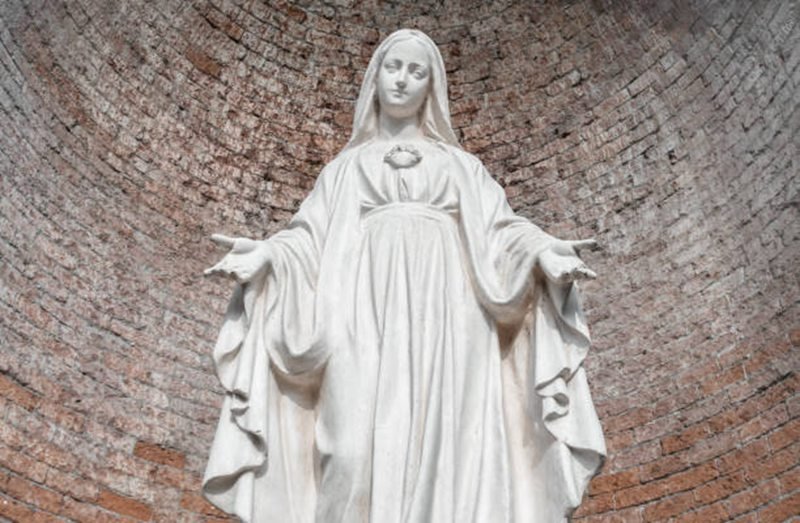
Our Lady of Miracles Statue
Background: Derived from the Catholic legend of miracles, statues bearing this name can be found in many locations. The most famous is located in the Church of Santa Maria della Miracles in Milan, Italy. Legend has it that the statue appeared several times in the 15th century, helping believers avert disasters.
Features: The Virgin Mary’s arms are outstretched, expressing a welcoming and protective gesture.
Symbol: It symbolizes miracles, healing, and protection.
Common Locations: Both sides of the altar in Catholic churches and at miracle shrines, such as the Church of Santa Maria della Miracles in Milan, Italy, and the Basilica of Our Lady of Miracles in Barcelona, Spain.
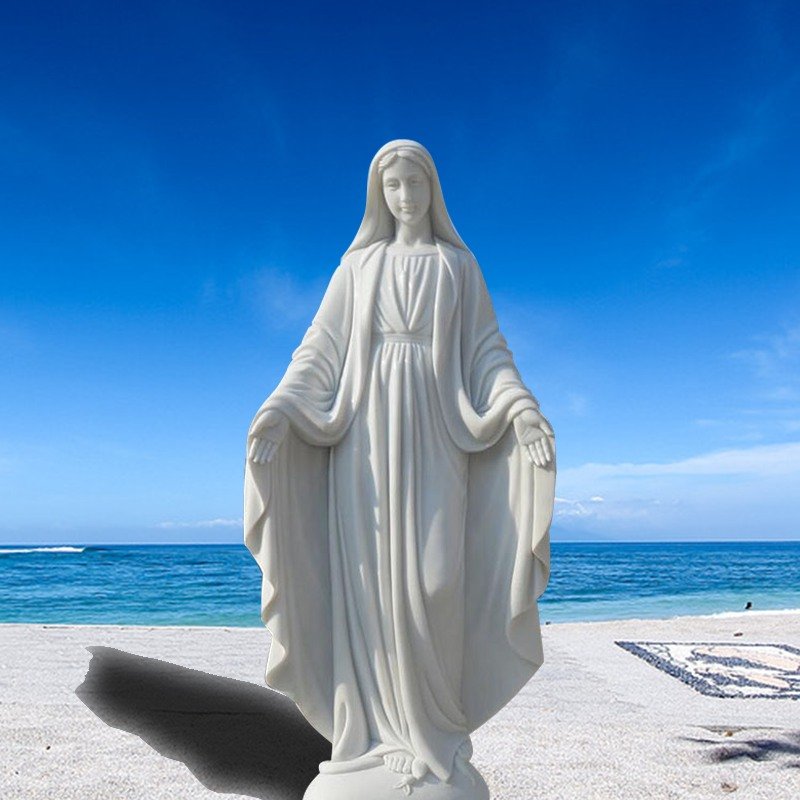
Our Lady of Lourdes Statue
Background: This statue is based on the 1858 apparitions in Lourdes, France. The young woman, Bernadette, had multiple visions of Our Lady in the Lourdes caves, where she was instructed to build a church. Lourdes has since become a world-renowned pilgrimage site.
Features: The Virgin Mary is depicted in a white robe, a blue sash, holding a rosary, and standing tall. This image is often depicted on a pedestal depicting a cave, recreating the setting of the apparition. She is sometimes depicted alongside a statue of Bernadette.
Symbolism: It symbolizes healing and guidance. A fountain of holy water is often located near the statue, believed to bring healing to both the body and soul.
Common Locations: The Our Lady of Lourdes Grotto in France, Catholic pilgrimage churches worldwide (such as the Our Lady of Lourdes Basilica in Washington, D.C.), and hospital prayer areas.
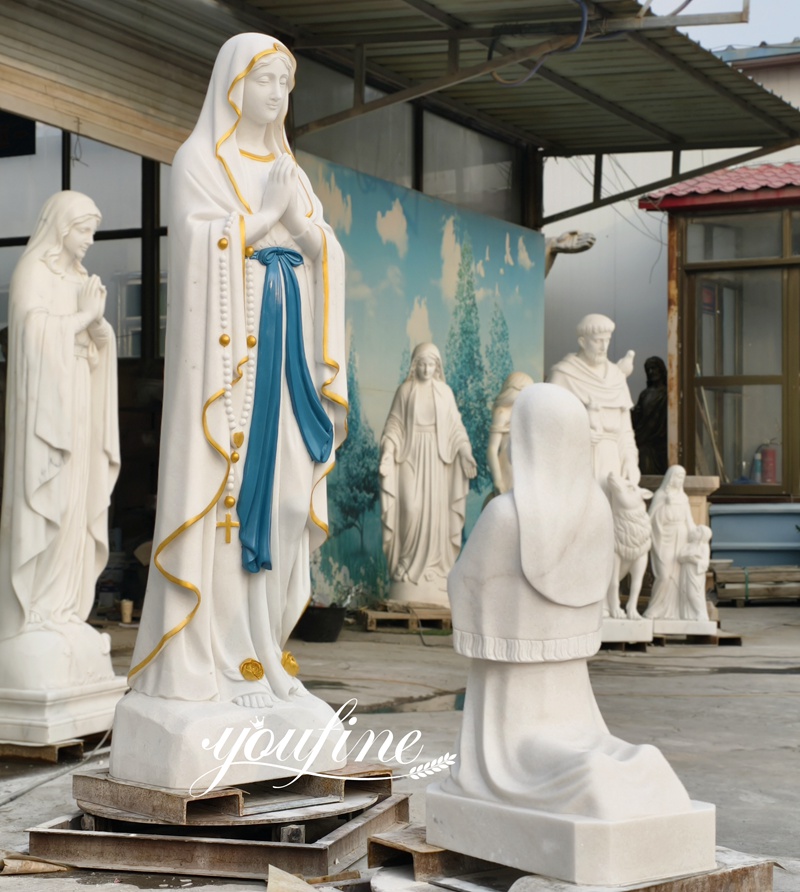
Our Lady of Fatima Statue
Background: Based on the 1917 apparitions of Our Lady in Fatima, Portugal, in which Our Lady appeared to three shepherd children in Fatima, foretelling world peace and the enduring faith.
Features: Wearing a crown, robes, and holding a rosary, Our Lady stands on a cloud or rock, surrounded by three shepherd children (symbolizing witnesses).
Symbol: Represents “peace and the enduring faith,” a spiritual symbol opposing war and calling for human unity.
Common Locations: Our Lady of Fatima Basilica, Portugal; global peace-themed plazas (such as the Plaza de Paz in the Vatican); and Catholic school auditoriums.
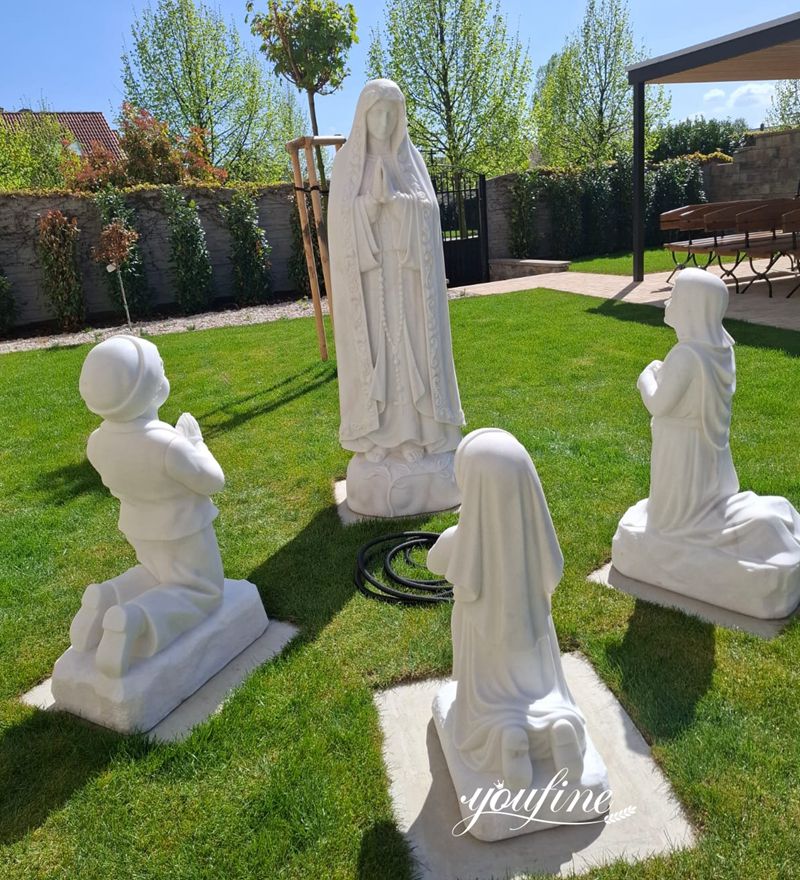
Our Lady of Guadalupe Statue
Background: A core symbol of Mexican Catholicism, it originates from the legend of Our Lady’s appearance to the Indian Juan Diego in 1531. The image of Our Lady blends elements of Indian culture and Catholicism, becoming a key symbol of Mexican national identity.
Features: The Virgin Mary is draped in a starry cape, resting on a crescent moon, and supported by angels.
Symbolism: This image symbolizes mercy, solidarity, and protection of the vulnerable, which are at the core of the Catholic faith in Latin America.
Common Locations: The Basilica of Our Lady of Guadalupe in Mexico (one of the three holiest Catholic sites worldwide), churches in Latin America, and cultural centers in Mexico.
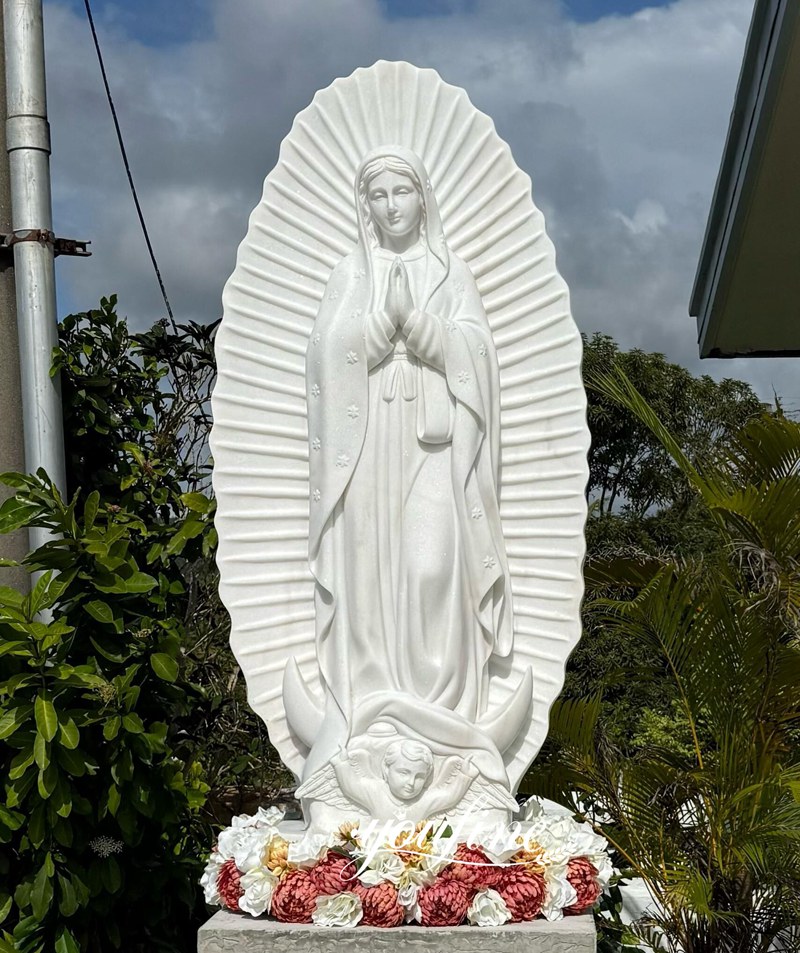
Our Lady of Perpetual Help Statue
Background: “Perpetual Help,” meaning “eternal assistance,” originates from the 13th-century Catholic belief that the Virgin Mary “provides assistance to believers at all times.” After the 19th century, this statue became a popular Statue worldwide, particularly revered by believers experiencing suffering.
Features: The Virgin Mary holds the Christ Child, while angels hold the instruments of the Passion.
Symbolism: This image symbolizes Mary’s eternal comfort and help.
Common Locations: Oratory rooms in Catholic churches, hospice areas in hospitals, religious services in prisons, and private prayer spaces for believers.
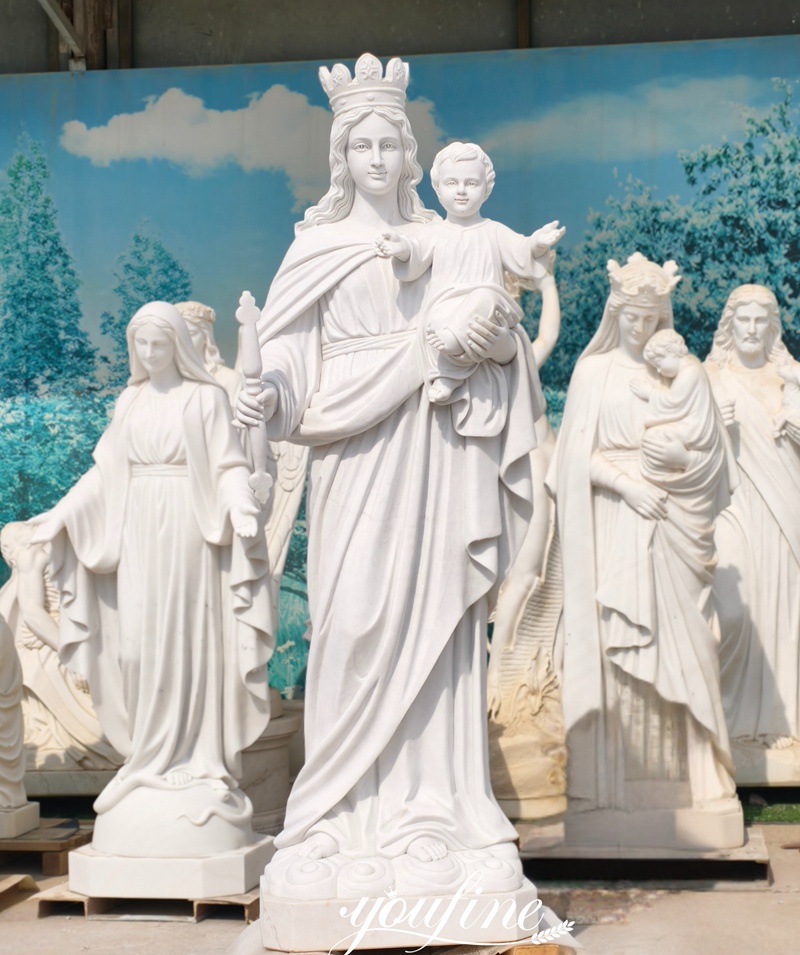
Assumption of Mary Statue
Background: Based on the Catholic doctrine of the Assumption of Mary, which states that after her earthly life, Mary ascended into heaven, body and soul, this statue is often found on church domes or altars, depicting a scene of divine ascension.
Features: Mary is clad in gold or white vestments, her body lifted or surrounded by angels, her feet off the ground, and surrounded by auspicious clouds and rays of light.
Symbolism: It symbolizes the ultimate destination of faith and divine glory, reinforcing believers’ belief in eternal life after death.
Common Locations: Domes of Catholic cathedrals (such as the Duomo di Santa Maria del Fiore in Florence, Italy), church altar walls, and religious art museums.
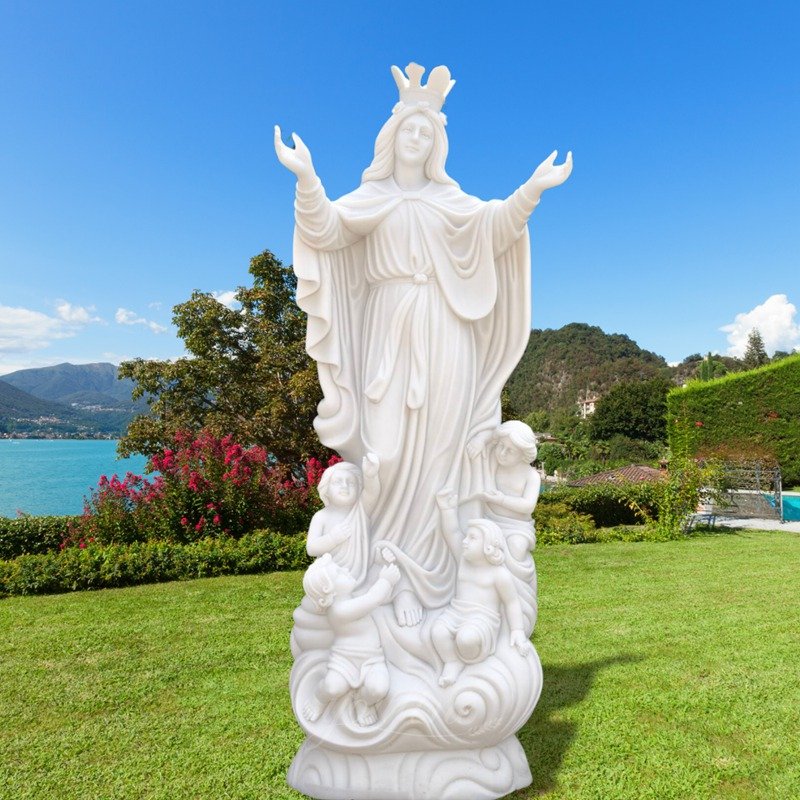
Our Lady of Knock Statue
Background: Originating from the 1879 apparition in Knock, Ireland, where villagers saw images of Mary, St. Joseph, and St. John standing silently before a church wall, Knock has since become a major pilgrimage site in Ireland.
Features: The saint wears a crown, her hands raised in prayer.
Symbol: It symbolizes “silent companionship and unwavering faith,” conveying the idea that “faith brings strength without words.”
Common Locations: The Shrine of Our Lady of Mount Carmel in Knock, Ireland; Catholic churches in the UK and Ireland; and churches in immigrant communities (such as those in Irish-American communities in the United States).
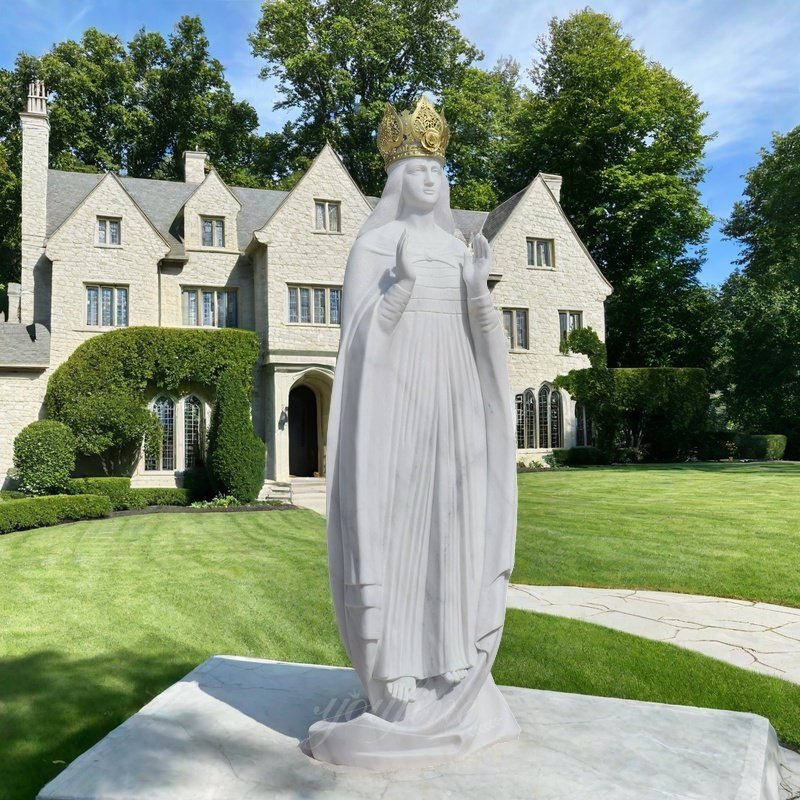

Our Lady of Mount Carmel Statue
Background: Related to the Catholic Carmelite Order. In the 13th century, Carmelite monks revered the Virgin Mary as their “patron saint.”
Features: The Virgin Mary holds the Christ Child and the Scapular.
Symbol: It represents “humble faith and devotion” and is a symbol of faith for Carmelite monks and their followers.
Common Locations: Carmelite convents, Catholic schools (founded by the Carmelites), and display areas in religious stores.


Pietà Statue
Background: “Pietà” means “mourning.” This statue depicts the Virgin Mary holding the body of Jesus after the Crucifixion. The most famous version is Michelangelo’s 1499 marble sculpture, a pinnacle of Renaissance religious art.
Characteristics: The Virgin Mary holds the body of Jesus after the crucifixion, her expression both mournful and serene.
Symbolism: It symbolizes maternal love, sacrifice, and redemption, and is the most emotionally impactful image in Catholic art depicting the Passion of Christ.
Common Locations: Catholic cathedral altars (such as St. Peter’s Basilica in the Vatican, where Michelangelo’s original work is located), religious art museums, and Good Friday commemorative exhibition areas in churches.
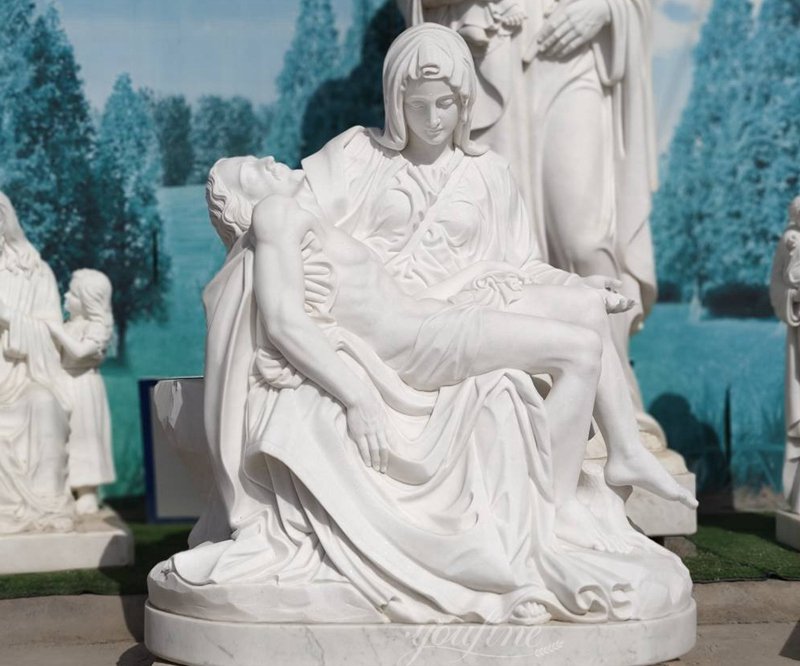
Madonna of Bruges Statue
Background: Created by Michelangelo between 1501 and 1504, it is his only sculpture to have left Italy and is now housed in the Church of Our Lady in Bruges, Belgium. Combining Renaissance humanism with a sense of religious sanctity, it has become a cultural landmark of Bruges.
Features: The Madonna is seated, robed, while the naked baby Jesus stands between her legs, holding her hand.
Symbolism: Represents the fusion of humanism and religious faith, and is a classic example of the humanistic approach of Renaissance religious art.
Common Locations: The Church of Our Lady in Bruges, Belgium (original), major art museums worldwide (such as the Louvre replica in Paris), and high-end religious art collections.

High-Quality Virgin Mary Sculpture Supplier: YouFine Factory
If your garden or church requires a high-quality Virgin Mary sculpture, YouFine Factory is undoubtedly a trustworthy choice. As a leading manufacturer specializing in religious sculpture for over 30 years, YouFine consistently prioritizes “reverence for faith and meticulous detail,” providing high-quality sculptures to believers and institutions worldwide.
Marble and Bronze Material Options
Marble Virgin Mary statues are crafted from a single block of natural marble, hand-carved and polished, and can be painted when desired. They can be stored indoors or outdoors for years.
Bronze Virgin Mary sculptures use the traditional lost-wax method, undergoing over 30 complex processes, including clay model making, wax shelling, welding, and patina, ensuring a natural, long-lasting color.
Devout Catholic Artists Team
These artists possess exquisite craftsmanship, a deep reverence for their faith, and a deep understanding of the significance of Virgin Mary sculptures for believers. Before creating a work, they thoroughly research the historical background and symbolic elements of each Mother Mary. From the objects held by the Christ Child to the Virgin’s posture and demeanor, adhere strictly to religious tradition and avoid any deviations in details.
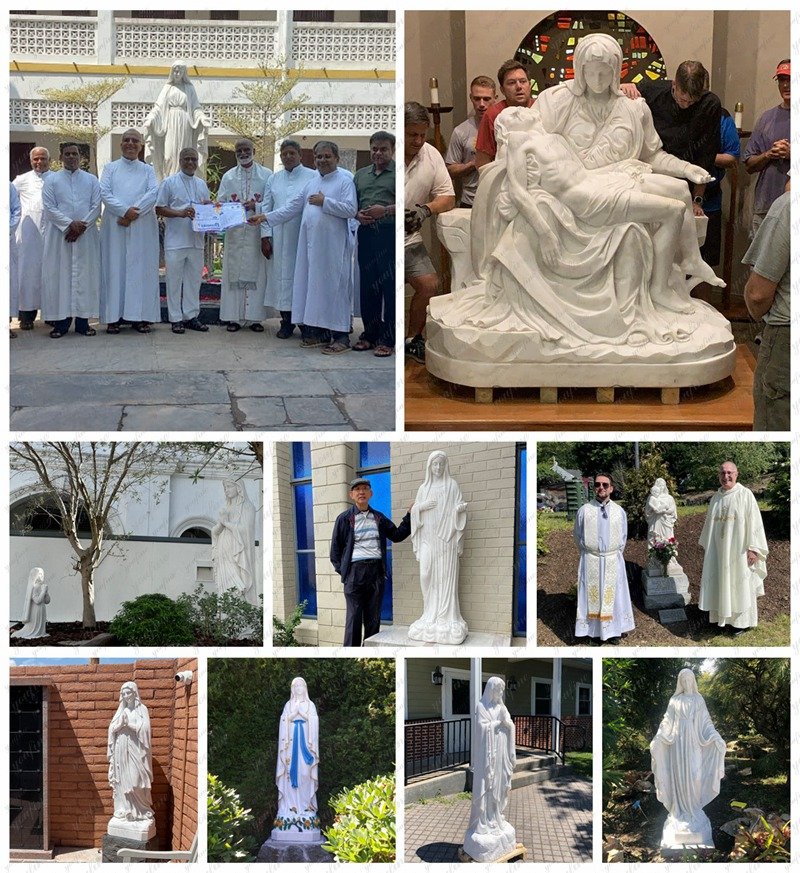
These different sculptures of Mother Mary showcase expressions of faith that transcend regions and centuries. Each statue carries a unique story and symbolism, reminding the world of the Virgin Mary’s vital role as mother and intercessor. Contact YouFine for your needs and let us bring a touch of light to your life.
